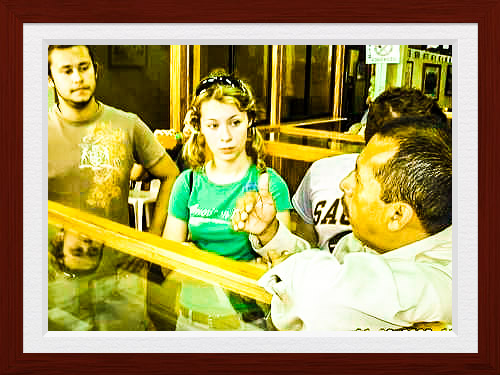 |
TRAVELERS NEWS
BIOLOGY - MEDICINE
The Venom of the Brown Spider in Nicaragua
In Nicaragua there is no Investigations done to prove that the Venom of the Brown Spider is the cause of Erisipela / Disipela in the Country. In Mexico it’s clear that the cause of Erisipela / Disipela is basically the Venom of the Brown Spider. Why Nicaragua omit this information? Perhaps due the good businesses that represents selling the wrong medicine!
For me it was a great opportunity to study the case, as the Case (E/D) is common in the Mountain region I live in. I have proof to Biologist and Medical Teams of the powerful and letal VENOM of the Brown Spider. Which at all times must be controlled by the Ministry of Health MINSA.
Conducting several monitoring – research tours on private investigations (Biological & Microbiological matter), I’ve also assisted big Expeditions whom interested on capturing (Filing/Vídeo/Photography) nature have booked to my company NICARAGUA RECON TOURS ©®™ the best Flora and Fauna tours, making it my passion, to learn about the BIODIVERSITY of Nicaragua & Central America. I served as Interpreter / Translator to a wide array of U.S.A. Medical Teams in Nicaragua (Surgeons, Nurses, Optometrists, Dentists & Dental Hygienists, Pharmacological & Pharmacists, General Medicine Doctors, etc) whom throughout Personal Involvement conducted Mobile Clinic Campaigns in Rural Communities of Matagalpa.
My ultimate research provide to the local authorities a key to success on combating ERISIPELA / DISIPELA and emphasize on the urgency on giving a proper treatment to the patient.
Therefore I have presented this REPORT to take authorities at the Ministry of Health (MINSA) to study the particular case through my investigation, which has not been taken seriously yet.
Endemic Pathology
Nicaragua has not conducted research over this health problem yet! This is the first allegation (study/edition) that demonstrate the real issue with this case called wrongly “disease”.
Eco-Epidemiology at el MINSA does not know, from where ERISIPELA is coming from. Patients presenting the symptoms below are losing their Body Members and Dying. Doctors have omitted this investigation so far and they continue TREATING the patients with drugs and ointments that at any point on time represents a real solution to them and their families.
Venom and not Disease
I will not extend the cause of the “Disipela/Erisipela from a biological point of view.
Among the thousand of identified spiders in the world, there are four genus that are the main responsible of human deaths: Phoneutria (South America), Atrax (Australia), Loxosceles & Latrodectus (World wide).
In the Nicaraguan case, I’ve personally monitored (researched) the Loxosceles, which ends up being the real cause of the deaths of many through its venom.
The famous Brown Recluse Spider (Loxosceles-“R-selected”-Laeta) – A brown coat with a black violin marking on the cephalothorax (top of the spider) distinguish it. It has an initial bite “mild” and may be oversighted in the meantime.
Within an hour or two, a slight redness appears, and after hours blisters begin at the bite site. It turns like a bull’s eye with red- white rings around the bite. Blister ruptures-forming a crust, which then sloughs off. A large necrotic (decaying) ulcer forms which gradually enlarges. Over the first 36 hours, vomiting, fever, skin rash and joints pain may develop. In severe cases the red blood cells break down in the circulation. Later, if left without treatment the member bitted must be amputated.
Treatment
An antivenin has been develop from rabbits or horses, and are being used experimentally. In Mexico, for example they do treat the venom with RECLUSMYN, a forth generation antidote that neutralizes the toxicity of the spider.
Venom Composition
The venom of this spider has cytotoxic and hemolitic actions. It had at least nine components; among these: the enzymes ( hyaluronidase, deoxyribonuclease, ribonuclease, alkaline, phosphatase, lipase and sphingomyelinase D). Levartenerol.
Habitat
It can be found in semi-dry areas, shadowed, like gardens, cracks, interior of the houses, bedrooms. They like temperatures around the 16°C-23°C but survives at -5°C-48°C. To live, it creates a ootheca of 1 cm where she lays between 80-200 eggs, with an average of 90(1). It takes 1 year for them to become adults. They can live from 3.5 to 4.2 years.















